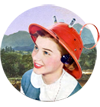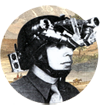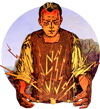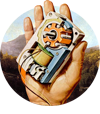The Nature of Participatory Culture & Technology
Categories:

Participatory culture is about the intersection of digital media tools and the ongoing transition of the World Wide Web from a collection of websites to a full-fledged computing platform serving a variety of web-based applications to people. I use the term “participatory culture” to reference the concept of active participation or the act of sharing in the creation of ideas, versus the “passive” scenario where people can receive information but are not allowed to engage in the creation or selection. Participation also refers to the availability of sources and individuals’ ability to customize their media experience.
We are at the beginning stages of a shift that will allow people, not only to create and distribute content and ideas, but also to act as filters and editors.
Recently, I’ve been writing about the major trends emerging in new media and technology tools that significantly reflect changing attitudes toward technology and communication. I contend that these trends have a considerable impact on society, especially young people growing up in the sensory-inundated environment of digital technology and mass media in the 21st century. These trends include open source applications, online video/audio, participatory media or personal broadcasting, and dynamic knowledge creation and social networking tools.
I would like to focus here on dynamic knowledge creation and online social networking tools. When effectively integrated into programs, these tools can extend learning in powerful ways. They can provide students with:
- Access to up-to-date, primary source material;
- Ways to collaborate with peers, teachers, and experts around the world;
- Opportunities to express understanding via images, video, sound, and text;
- Opportunities to learn coding (html and CSS) and use tools to create and edit online content
There is a real connection between teaching students web design, online distance learning (ex. Moodle), and popular services such as MySpace (I have my own page) and Second Life,. Second Life is a cross between a social network and gaming platform (even though it’s not a game) or computer-controlled virtual universe where virtual people interact with each other to do anything they can think of.
I think that popular culture not only reflects what people are consuming and using but also can provide clues on how to develop new and exciting projects for young people today and in the near future. I think that MySpace and Second Life are more than just distractions. As an educator, I am thinking of ways to use these applications to develop building blocks for learning web design and development, including online course development/management. It is important to note, however, that almost any application can be dangerous if used incorrectly or without the proper understanding of the rules and guidelines (or terms and conditions).
Learning how to code for the Web is becoming an essential skill, and editing MySpace requires knowledge of coding and web publishing. Why not use MySpace as a tool to teach these and other web skills? I enjoy creating images for my page, but MySpace has been educational for me as well, as it helped me to learn CSS (I am much better with HTML). In my opinion learning CSS is the first step to advanced web design.
Exploring MySpace and other tools, like Second Life, on my own has been very helpful in my work as an educator. Second Life uses Linden Scripting Language (LSL) that is similar to Macromedia Flash Actionscript so I've been able to teach basic Actionscript to students as young as 12. Second Life is also being used to extend the traditional classroom:
“Second Life provides a unique and flexible environment for educators interested in distance learning, computer supported cooperative work, simulation, new media studies, and corporate training.
Second Life provides an opportunity to use simulation in a safe environment to enhance experiential learning, allowing individuals to practice skills, try new ideas, and learn from their mistakes. The ability to prepare for similar real-world experiences by using Second Life as a simulation has unlimited potential!” - http://secondlife.com/community/education.php
The key to successfully integrating these tools and technologies into education is to have an explicit purpose and shared objective for everyone involved. Assignments should be project-based and encourage collaboration between students and teachers, who both need to feel comfortable creating, editing, and publishing with the tools.
Participatory culture shifts the focus of digital media creation from one of individual expression to community involvement and civic participation. The new ‘core competencies’ almost all involve collaboration and online social networking. The role of non-profit organizations, especially community technology and media centers, is to help their members gain skills that build on the foundation of digital literacy, such as research and technical skills and critical thinking in the 21st century.










